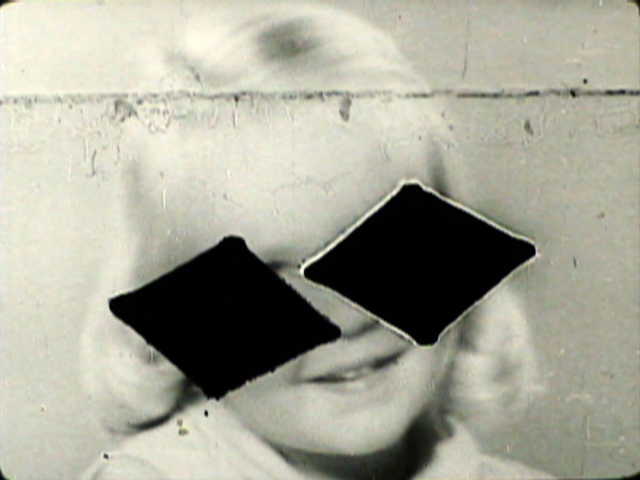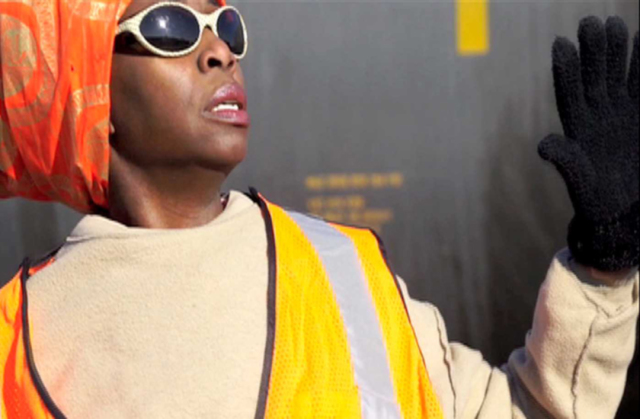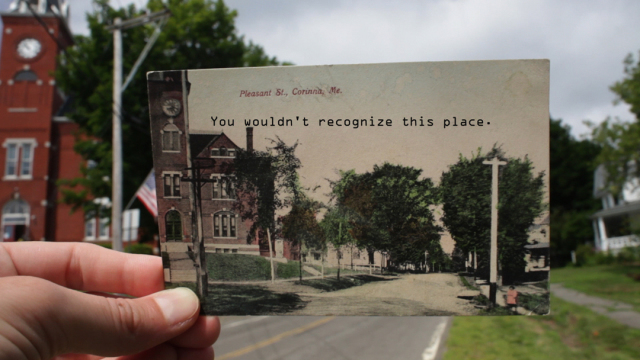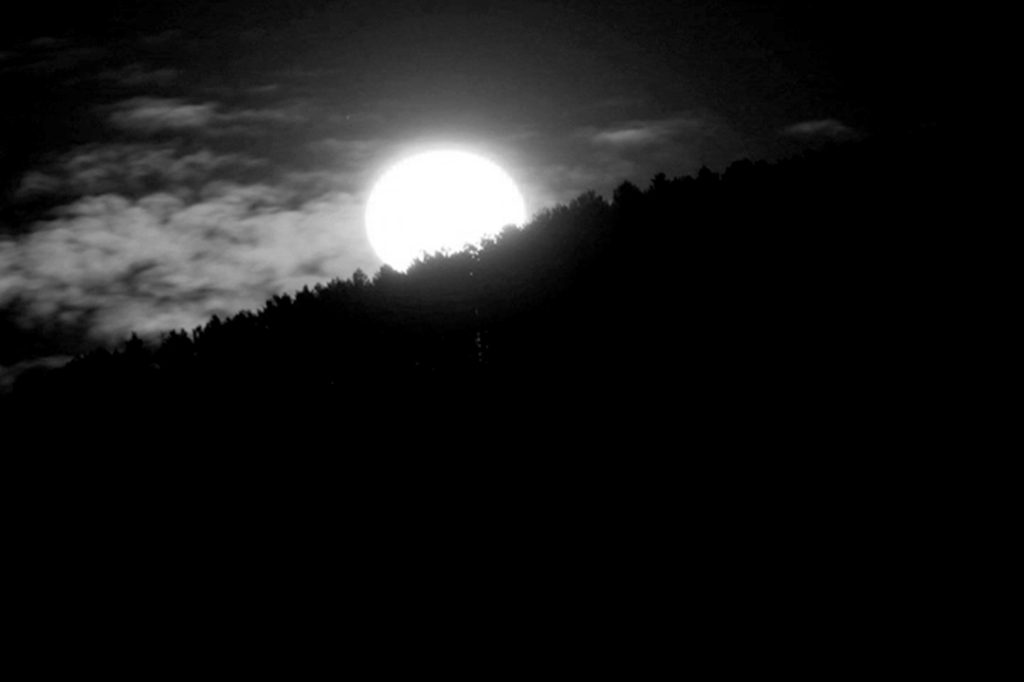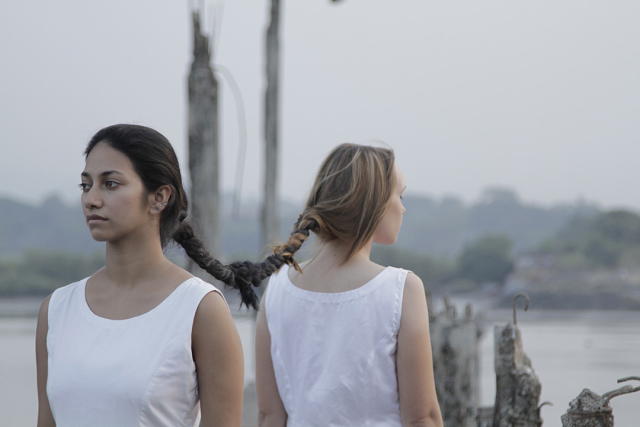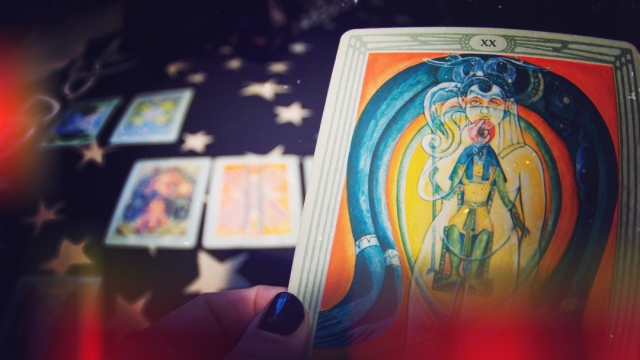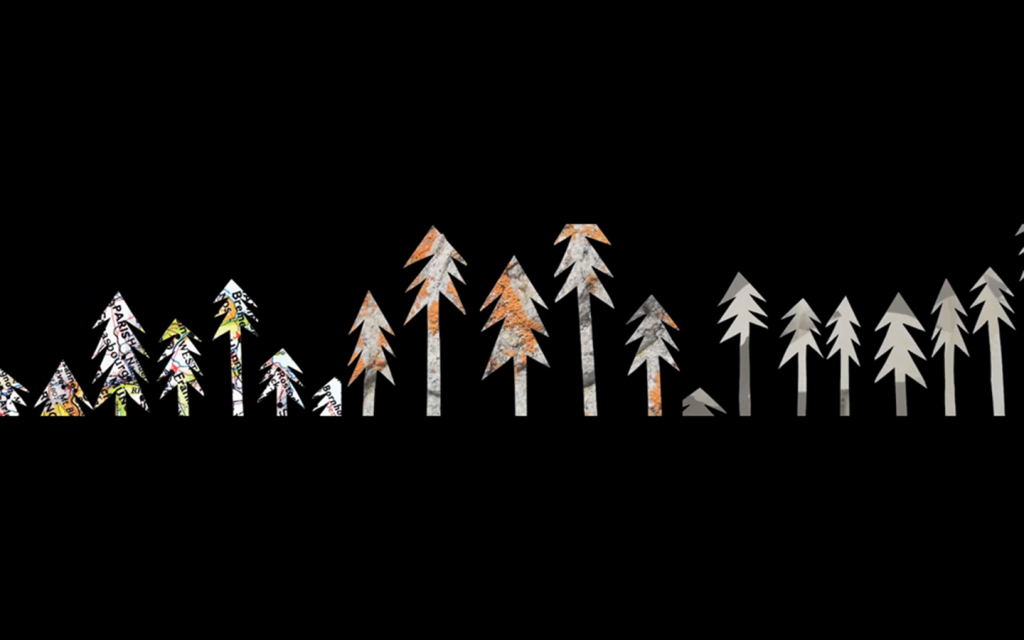To have a complicated relationship with time is to be human. We are all hourglass figures, living our lives stuck between the past and the future, trying to find the present moment and be there before our time is up. As a woman I have thought a lot about time in relationship to my body, its function in part tied to the clock and calendar. Loss has altered my sweeter notions of nostalgia, warping it into a more complex and painful concept, a longing for something that never was and can never be, the desire to rewrite the past and save something that is gone. This preoccupation with re-imagining the past coupled with anxiety over what happens next and fear of the unknown was impetus for creating the theme of Past Perfect • Future Tense.
Past Perfect • Future Tense was the ninth edition of GAZE, a women’s film series that happens quarterly at Artists’ Television Access in San Francisco. I have been part of the curatorial team since Fall 2014 after moving to the Bay Area, and have co-curated the past two screenings with Mallary Abel and Tessa Siddle. I took the lead on writing the call and programming invitational work for Past Perfect • Future Tense. Loosely inspired by the summer solstice, the screening happened Friday, June 26 and featured the work of 16 filmmakers made across eight countries.
The Alien Project by Catron Booker is of the past and of the future at the same time; yet, it was made in the moment without hesitation as a record of action and a gesture of the present. Currently living in Oaxaca, Mexico, Booker started the project while working on her MFA in Film at University of Wisconsin, Milwaukee. She describes the work as “an Afro-Futurist vision of resistance” and was heavily influenced by Malick Sidibé’s powerful photography of the 1960s youth pop-culture in Mali, as well as the work of Julie Dash, Sun Ra and Octavia Butler. “I was thinking about Fluxus acts and the question of statelessness and migration which persistently haunts me as I learn of these shared, yet diverse, narratives which seem to thread themselves throughout the African Diaspora.” The Alien Project is a concise and eloquent performance that looks deeper into topics of race, identity, belonging and exclusion through only three short scenes with two dancers. Booker uses dance to reanimate abandoned industrial spaces and as a political act during the final scene in front of the office of Homeland Security.
An exploration of abandoned spaces, deliberate gesture, and a search for identity link the work of Professor Cecelia Condit and her former film student, Catron Booker. Currently teaching in the Department of Film, Video, Animation and New Genres at the University of Wisconsin-Milwaukee, Condit has shown internationally and has received numerous awards. Her most recent work, Pulling Up Roots, was filmed in a housing project that was abandoned in Ireland’s 2008 Celtic Tiger economic crash. The film is visually rich yet distilled––the place, her body and their movements. Condit struggles to pull up the weed-like wildflowers that cover the hillside with such fierce determination and focus that you are unsure whether she is rescuing them or ridding herself of them. Stunning images coupled with a poetic nursery rhyme for adults in the voiceover, “she was so occupied, she didn’t notice she died,” produce complex truths that only seem approachable in short phrases. Condit quietly fools us into reflecting on our own lives and mortality by using song to communicate things too hard to explain.
In addition to the landscape of Ireland, the strength and fragility of people and place become the transition to Ceallaigh at Kilmainham by Kelly Gallagher. The sun sets behind hand-painted titles in anticipation of a meaningful phone call with her mother. Gallagher packs in radical histories and personal narratives, as she recounts a visit to the Kilmainham Jail and a story of learning her Gaelic name. Endearingly fumbling to find words to explain her uncertainties about pregnancy to her mother you feel as if you are part of the conversation. Gallagher’s hand alters the found home movies by painting over the faces of identities, so that we may project our own families onto the images and contemplate our connection to the women we come from. Footage of waves crash into the heart of the exchange between mother and daughter, as her mother voices, “We really wanted our babies––so much.” Gallagher lives up to the meaning of her name “Brave woman warrior” in offering such a private moment to the public.
Ceallaigh at Kilmainham and dear, by Carolina González Valencia are both personal films that weave politics and social issues into emotional narratives, one a long distant phone call with a mother, the other an unsent letter to a distant father. dear, uses high contrast B&W film to add texture to the complexities of her story. Valencia then hand processed the film. “I was interested in how the materiality and long process could help me to find the story I wanted to tell,” she states. Poetic fragments paint a portrait that take you from the Chicago skyline in the distance with narration about macro issues to the intimate image of a hand slicing mango coupled with a private memory of home. Cut out animation of clocks fall from the screen representing the impossible task of measuring the growing distance that separates a father and his daughter. The surreal quality of imagery brings emotional honesty to her complicated questions about the connection of family ties.
Fragments of a common place connect us from the Chicago skyline to the Chicago Film Archives where Deborah Stratman sifted through the Archives to make Second Sighted, an extrasensory perception of evidence from the vast collection of amateur, institutional and regional films. Giving a second look and a second life to the footage, she crafts a prophetic premonition from disasters of the past. Working in collaboration with Olivia Block to arrange a haptic score of sounds that vibrate with unease. Environmental anxieties build an eerie foreshadowing of erosion, drought, pollution and depletion using decades old imagery. Unwilling to see the signs, the film swells to a close and leaves us drowning in a crisis that we created.
Hope Tucker mines the past to create experimental eulogies for places, people and their customs through her ongoing series, THE OBITUARY PROJECT. The Sea [is still] Around Us uncovers the tarnish of time through a portrait of Corinna, Maine, EPA Superfund site. Tucker spent time researching the history of nearby Lake Sebasticook, where years of industrial waste contaminated the water supply, after reading a 1964 New Yorker essay by author E.B. White mourning the loss of environmental activist Rachel Carson. White wrote, “This small lake is a sad reminder of what is taking place, in some degree, all over the land, from carelessness, shortsightedness, and arrogance. It is our pool of shame in this, ‘our particular instant of time.’” Tucker uses vintage postcards as a conceptual framework and attempts to match the images with their actual location, while text collected from the postcards, legal documents, environmental reports, and online comments presents the case. A crisp sound design of nature echoes a warning of the threatened landscape and habitats that surround us. Tucker’s documentary practice and its inventive use of evidence and artifact is smart, creative and concise. Although site-specific in nature, the film becomes a portrait of a shared ecosystem and reminds us that the pollution of the past becomes the grief of future generations.
Time is a circle, albeit a hazy and wobbly one. The experimental animation Velocity by Karolina Glusiec is inspired by things that seem the same, but are different––places, people’s lives and the schedules they keep. Hand drawn on paper and shot on 16mm, the images present a hyper-aware portrait of time and memory through Glusiec’s hometown, a place that no longer looks the same. “For me drawing is the most sincere means of communication, and the most honest representation of one’s thoughts and feelings.” The flickering style of the raw animation has an energy and emotion that makes Velocity a film that you want to watch again and again. A passing train, a woman’s face, workers leaving a factory, a single blade of grass––the everyday and banal become irresistible through Glusiec’s aesthetic sensibility and brilliant transitions.
We are born from and into cycles. Berlin-based Sylvia Schedelbauer’s films breathe new life into discarded film fragments through her poetic manipulations of found footage. A highlight of the Past Perfect • Future Tense screening, the film was partially created in the very space that it was screened: Artists’ Television Access.
Some of the visuals come from the basement of Craig Baldwin’s archives and some were filmed in the microcinema with Linda Scobie and shot by Cyrus Tabar. Schedelbauer has been perfecting a unique type of editing that combines both flickering and fading techniques. “What makes this work slightly differently from the works before is that I wanted to make something that dealt with the female body and its cycles, and the connections that we feel towards nature.” Sea of Vapors is a genius use of illustrated time, where past and present are cut together in a calculated, meticulously crafted yet chaotic and disorderly pace. The pulse entrances while pulling you into the screen, but at the same time repels you back into the inner landscapes of your mind.
Unlike Second Sighted, which mines through a large collection of archival source material, Computers (in our Lives) by Traci Hercher utilizes a single found film. Hercher found a 16mm educational film entitled Computers in our Lives (1980) and was inspired to re-edit the film. “My aim was to uncover an underlying collective anxiety that I felt the outwardly-cheery film was burying.” Her remake becomes a musical of sorts as she cuts away all of the narration except for the word “computer.” Hercher recuts this glorified advertisement produced by the Hearst Metrotone News into a cautionary tale about the presence of computers in our lives today. Originally made to sell computers to the public with the message that computers will improve your lives, Hercher’s cut alludes to a different intention–that computers will rule your life. Computers (in our Lives) poses questions about our own productivity and sense of security.
Heidi Kumao’s experimental animation Swallowed Whole reminds us that nothing is as secure as we think, and even our own bodies can be unreliable. This visual narrative is based on a traumatic sledding injury that left Kumao in a back brace, disconnected from her life. It is a moving portrait of isolation and being trapped in the present. The emotional imagery of a woman being swallowed by ice not only references the accident, but also speaks to the cold landscape of the healthcare system and navigating its murky terrain. Kumao’s creative visuals put you in a sympathetic perspective––anxious as the world unfolds around you and you are stuck in your body––lying down, staring up. Made at various residencies, including the Arctic Circle 2013 Summer Solstice Expedition where she captured the most powerful shot in the film where Kumao is dressed in a hospital gown standing on a floating chunk of ice, a vision of both vulnerability and strength.
Our bodies are vessels for our souls, and sometimes we feel trapped by the vessel we call home. Shubhangi Singh shot Anywhere But Here in her birthplace of Mumbai, India.
There is an energy to the creative set design and stunning photography that makes this work a testament to having an open call for submissions, as you never know what treasures are out there in the vast world. This film speaks to so many universal truths about what it means to be human and to be woman. In it identities and places are projected onto our bodies, stirring up unsettling notions of our place or “home” in greater society. The film is a hybrid of performance art, contemporary dance, and experimental narrative––Singh takes us on a journey of her process through a series of short vignettes––a woman packs herself into a suitcase, sideways teacups cannot be filled, and knives dangle over her as she sews a garment. Singh’s interests lie in our longing to feel a connection to place and the burden of what we carry with us as attachments to home. The essence of the message can be distilled into these two questions that the voiceover asks: “Where do you come from? Will you be staying?”
Careful composition and connectivity link Singh’s film to The Conversation by Kim Collmer. Collmer’s background in sculpture and painting shines through in the physicality of this short, as she arranges and rearranges colored paper. Hands wrapped in black gloves suggest an obscurity and a vagueness that matches the idle chatter of the text that appears on screen. It is a piece about the dying art of conversation. As two characters fumble to locate something on a smart phone that they can no longer find, their words fail. The viewer is left to contemplate exchanges that seem meaningless. Perfect squares of color layer upon themselves to represent the constant screens that bombard our daily life and the amount of time we spend devoted to these spaces in our dialogues and investigations of life. The intense, saccharine colors of the film and paper transmit a darker view of the future just as the over-saturation of online “content” threatens to erase the content in our own lives and stories.
A pair of white archival gloves displays a golden artifact of the past or from the future. The time and place is anywhere, hinting to our long and complicated history of mining things from nature. The pioneers of the Gold Rush, the American Dreams of laborers, commercials for products that promise something better, all seem to fit into the oblique narrative of Over Fractured Water by Olivia Ciummo. Originally from Pittsburgh, Ciummo found inspiration in the Allegheny National Forest of Pennsylvania, “I saw this area as significant because it is an old growth forest where hydraulic fracturing companies were trying to get permits to drill.” Ciummo’s camera lets the forest stands as witness to the manufacturing and trade that has come and gone.
The magic of the forest, a sense of mystery and exploration of the forgotten connects Ciummo’s film to Trapped Between Frames by Nazare Soares. The piece is a single-channel version of a stereoscopic photography installation that was the culmination of Soares’ studies at the University of Brighton. It was inspired by Japanese folklore and the Kaiser-Panorama, a pre-cinematic display made in 1883, and is the story of the sun goddess, Amaterasu portrayed through a painterly hybrid of formats—16mm, VHS, HD and 3D animation. There is a physical element involved in viewing this film, as your optic nerve works overtime to transport you from dream to myth to history. Memory becomes a visceral concept as the shrouded figure walks between stereoscopic images of caves flickering. Soares brings intent to the myth of Amaterasu, and an unwavering strength to the screen as she reverses the gaze to remind us that we part of something bigger than ourselves.
The cosmos connect us to myths of the past and notions of the future––we lose ourselves and we find ourselves in the skies. San Francisco-based filmmaker and animator, Mirka Morales, made Reciprocity Failure while at Djerassi Artists Residency for two months. “When you live in the city, you get disconnected from these [natural] cycles. I felt a bit like a lunatic when I first got to Djerassi. The moon, the clouds, the fire, I was just documenting what was in front of me, without preconception.” Each night, Morales setup her camera and left it running as a way to document her residency in the clear skies of the Santa Cruz Mountains. The title comes from the reciprocity law in photo-chemical photography and filmmaking, which determines exposure time by measuring light intensity, a failure can occur in extreme lighting situations. She captures the freedom that the space brings her and embraces the word “failure” in the beautiful color of 16mm film. The moon travels across the cobalt frame, through branches and fog, changing shapes as a witness to the passing of time. Reciprocity Failure is not only a study of a place and time, but also a frame of mind, Morales invites us into her sacred, creative space and lets our minds wander.
Wandering is also the inspiration for Caroline Blais’ Roundtrip. Originally created as a triptych installation for public space, Blais worked with sound designer Cédric Chabuel on the single-channel version. The short animation is a loop about the journey rather than a particular place in a particular moment. It is a collage of old maps, field guides, magazines and drawings that move across the screen to the sounds of radio, transportation and the outdoors. “I travel because I am curious to see what is out there, elsewhere, in the world. I used to travel to get away from my life, but I quickly discovered that I couldn’t get rid of myself that easily.” Roundtrip catalogues the things that connect us to one another and different places––the horizon, the trees, the wind, the seasons, the roadways we travel on––linking our past experiences to our future, wherever we end up.
Past Perfect • Future Tense includes 16 individual voices and visions that would resonate in many contexts with diverse audiences. To me this collection of films builds in a strong and compelling way, creating new meaning between the works––space where silence has value and time connects us to one another.
Link to GAZE:
https://gazefilmseries.wordpress.com/
See more Gallagher and Finelli at Animated Imaginations, 9/19 at OTHER CINEMA.

